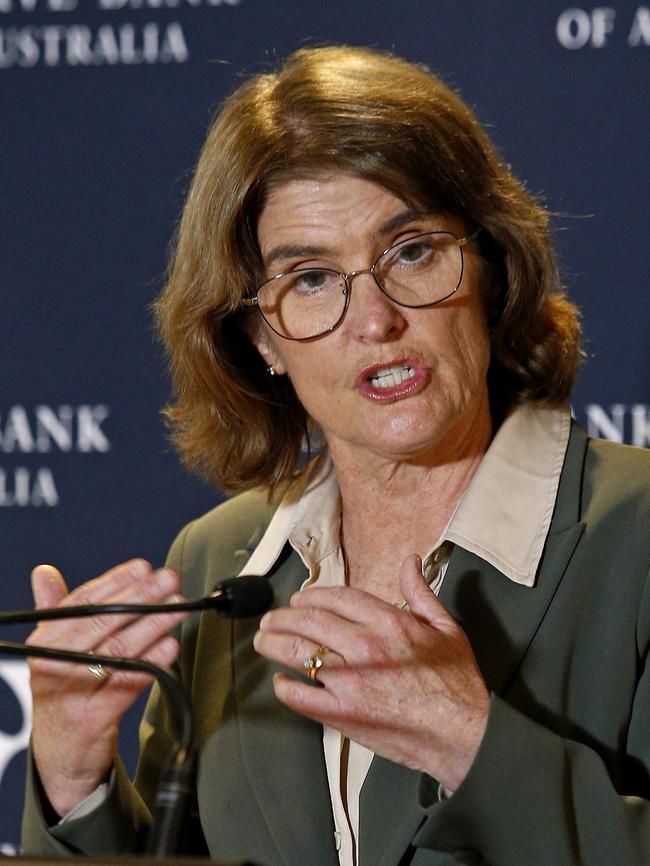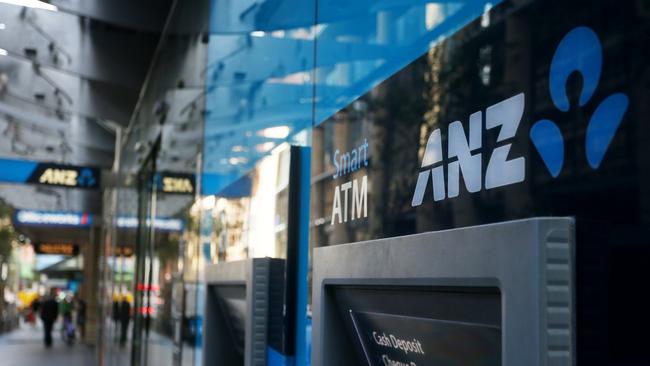Why global money is rethinking ‘anything but China’ trade
Big investors are preparing to play in China again, but the wild swings are not for the faint hearted.

Business
Don't miss out on the headlines from Business. Followed categories will be added to My News.
For the past few years, the “ABC trade” has been a sure thing among stock pickers.
“Anything but China” means exactly what it says: Too much risk, too much downside as the world’s second-biggest economy undergoes its own shuddering slowdown.
This has made sure global investors went looking for opportunities elsewhere.
A string of massive stimulus programs aimed at jump-starting parts of the economy, including putting a floor under the stricken property market, has prompted some to reconsider the potential of renewed exposure to China.
However, it’s a risky affair. The aftershocks stemming from the stimulus packages – and occasional disappointments – are not for the faint-hearted.

Chinese domestic shares initially rocketed more than 10 per cent on Tuesday, as investors bet on more to come in the stimulus blitz. That came on the back of a record rally last week. However, all this optimism took a sharp reversal as, during a press conference, Beijing held off on another round of stimulus measures.
Still, officials at China’s top economic planning agency, the National Development and Reform Commission, promised further support and expressed confidence that China would hit its growth targets this year.
That was enough to hold some gains of around 6 per cent, but it still left Australian resource stocks, as well as Hong Kong shares, sorely disappointed.
Before Tuesday, China’s benchmark CSI 300 share index had jumped a staggering 30 per cent since Beijing started unveiling its measures on September 23. Many of the measures were designed to free up lending and fire up China’s depressed property market.
Paradice Investment Management portfolio manager Tom Richardson says the scale of the initial package – and the fact it caught many unaware – was enough for investors to sit up and take notice.
“This was a very large stimulus package; something that we hadn’t seen for a number of years from China,” he said.

Richardson was speaking on Future Generation’s newly released Investing for Impact podcast series in conversation with the social impact fund’s chief executive, Caroline Gurney.
“The fact that the government came out with these stimulus policies, we saw huge moves, obviously both within the China domestic market and our market,” Richardson said.
“But ultimately, positioning suggests that could go on. And when the (Chinese) government has a clear target of stabilising the economy, we’re taking note.”
Richardson says that until now, China hadn’t shown any real appetite to stimulate the economy, but the measures of the past week – including 800bn yuan ($168bn) support for equities and 2 trillion yuan in broader economic measures – showed “significant impulse”.
“The market responded obviously very nicely,” he says on the podcast.
The backdrop to all this is that for at least two years, investors had been trying to sell anything China exposed, says Richardson, who heads up Paradice’s Equity Alpha Plus strategy.

The clearest example of this has been a Hong Kong-listed Chinese HR services company called Tongdao Liepin. It caught his attention while researching Seek’s China-based offshoot, Zhaopin. Tongdao has the equivalent of $420m cash sitting on its balance sheet, but its market capitalisation was trading at just half that.
“That means the stock had a negative value … it shows you how the disregard for stocks in China, both from domestic and offshore and national investors,” Richardson says.
Richardson is one of the more than 30 top asset managers who co-invests on behalf of Future Generation’s family of funds. The Future Generation domestic and global funds mirrors the investment exposure of leading fund managers, including Richardson’s firm, Paradice.
For Australia, the China story means exposure to commodities. And while it’s early days, the packages are expected to be broadly supportive of key commodities – from iron ore to copper. Richardson says his fund has been increasing its exposure to metals. Even so, Australian exposed miners took a beating on Tuesday without specific measures of support beyond committing to propping up the economy.

Richardson on Tuesday says he still finds a compelling story there, but acknowledges that it will be volatile for a while to come.
“When the Chinese government says they’re going to do something, there’s a good chance they do it,” he says.
Others, including investment banks Citi and Goldman Sachs, have also turned more bullish toward China in recent days.
Regal Fund Management boss Philip King last week told an investor briefing he was taking a second look at China for his $17bn funds group and starting to move back in to Chinese shares.
“No doubt, the structural challenges in China remain. The ageing population, the bursting of the property bubble and the excess debt levels. But in my view, valuations just got too compelling,” King says. “Everyone got too negative.”
Chaired by former Reserve Bank governor Philip Lowe, Future Generation allocates a slice of its annual investment returns to social impact programs. This has so far seen $87m donated to youth-focused, not-for-profit organisations.
RBA’s cheap loans
Michele Bullock’s Reserve Bank spent a portion of last month’s board meeting examining the emergency $188bn funding facility made available for banks during the depths of the Covid-19 pandemic.
While other parts of the RBA’s unconventional monetary policy response to the pandemic – including the use of forward guidance – have attracted criticism, an internal review of the term funding facility that delivered ultra cheap fixed-rate mortgages shows it helped keep the economy moving.

However, the program that so far generated $10bn in paper losses may have been too generous, according to the RBA’s September board minutes, published on Tuesday.
The facility, where banks effectively borrowed cheap fixed-rate funding from the RBA, helped the economy by reducing the funding costs of banks and, in turn, interest rates paid by borrowers.
The liquidity available also encouraged banks to lend to businesses during a tough period, the review found.
Indeed, the facility was largely behind the massive shift by Australians to fixed-rate mortgages during the Covid-19 pandemic. This later stoked fears of a mortgage cliff as billions of dollars in fixed-rate loans reset at a higher rate. But it never eventuated.
However, there were questions in the RBA’s board meeting last month about whether the program needed to be extended in September 2020 for another nine months, topped up with an additional $60bn.
In addition, the potential implications of the extension on the RBA’s balance sheet had been subject “to only limited stress testing”, the RBA board minutes noted.
Nearly half of the losses from the program were due to the extension in September. At the time, global funding costs were starting to rise, leaving the RBA exposed to the low fixed-rate borrowing costs.

Ultimately, banks drew down nearly 90 per cent of the total funding from their allowances. Australia’s big four banks and all the mid-sized Australian banks took up all of their allowances under the facility, while small banks and foreign banks took up a little over half of their total allowances to be lent back out in ultra-cheap loans.
The banks also had to repay the loans, but the RBA continues to hold the cheap loans at a loss.
Bullock’s RBA board still concluded the facility, “contributed effectively to restoring confidence in financial markets, keeping credit flowing and stimulating aggregate demand”.
They agreed a term funding facility should be one of the policy options that could be used to defend against another extreme shock. But like other unconventional tools that came under scrutiny in the RBA review, more contingency planning, risk management and governance needed to be built into the program. At the same time, more consideration was needed about the financial risks that a fixed-rate scheme represents to the RBA.
The full internal review of the term funding facility is expected to be published shortly, to coincide with a speech on the findings by the bank’s assistant governor, Christopher Kent.
eric.johnston@theaustralian.com.au
Originally published as Why global money is rethinking ‘anything but China’ trade



